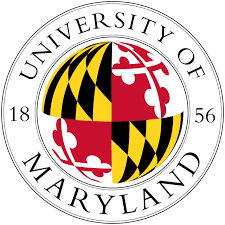Dance education, at its core, is an act of creation–an embodied dialogue between the individual and the collective, the past and the possible. As a dance educator, I view my role as both guide and collaborator: one who helps students discover their full potential as artists, thinkers, and community members. My work emerges from a deeply held belief that dance, when taught with intention and inclusivity, cultivates empathy, agency, and a profound sense of belonging.
My teaching philosophy is rooted in Laban Bartenieff Movement Studies (LBMS), a system that provides a framework for observing, analyzing, and synthesizing human movement. LBMS informs not only how I teach but how I conceptualize the very process of learning. Through it, I help students develop a nuanced awareness of body, effort, space, and shape–tools that allow them to make conscious, expressive, and informed choices as movers and creators. This approach aligns closely with my commitment to inquiry-based, student-centered learning, where students are recognized as co-creators of knowledge rather than passive recipients.
In the classroom, I emphasize a holistic relationship between technique, performance, and community. Technique establishes a foundation for embodied clarity and efficiency; performance gives meaning and life to that foundation; and community situates it within a shared context of purpose. My classes typically progress from establishing self-awareness to cultivating connections with others, and finally, to recognizing one’s role within a larger ensemble or social ecosystem. This structure not only builds technical and artistic skill but also develops empathy, collaboration, and accountability.
Cultural responsiveness and accessibility are essential to my pedagogy. Having worked in diverse educational contexts–from public K-12 schools in New York and New Jersey to conservatory and community-based programs–I design curricula that center multiple movement traditions and learning modalities. I view ballet, modern, and contemporary dance not as THE foundation of dance education, but as part of a larger global continuum of embodied knowledge. In my history and appreciation courses, I intentionally foreground Africanist, Indigenous, and diasporic forms, highlighting their philosophies, aesthetics, and social functions. This inclusive approach encourages students from all backgrounds to see themselves represented and to understand dance as a living archive.
I approach teaching with a trauma-informed and somatically grounded lens, shaped by my studies in Dance/Movement Therapy. Creating safe and supportive learning environments means attending to students’ physical, emotional, and psychological well-being. Through mindful sequencing, collaborative reflection, and adaptive instruction, I aim to meet each learner where they are while fostering resilience and self-efficacy. Failure, within this framework, is reframed as experimentation– a vital part of the creative process and of learning itself.
My pedagogy is also deeply interdisciplinary. Drawing from my experience as choreographer, arts manager, and researcher, I guide students to connect embodied practice with broader social and cultural discourses. Projects like Invoking Justice, Defining Space | Making Place, and Body of Letters invite participants to explore how dance shapes community identity, conflict resolution, and peacebuilding. In this way, I see dance education not only as a means of personal expression but as a civic practice–a vehicle for transformation and collective healing.
Ultimately, my philosophy of dance education rests on three pillars: embodied inquiry, communal engagement, and ethical artistry. I want students to leave my classes with technical mastery, creative courage, and a deepened awareness of their capacity to affect change. To dance is to think, to feel, and to act; to teach dance is to nurture the next generation of creators who will move–literally and figuratively–toward a more connected and compassionate world.






University of Maryland Student
Fundamentals of Modern Dance